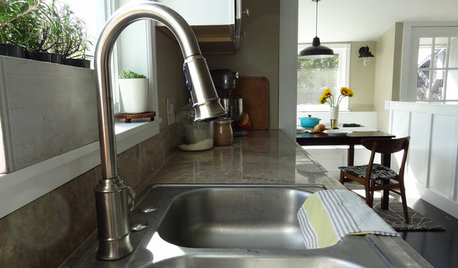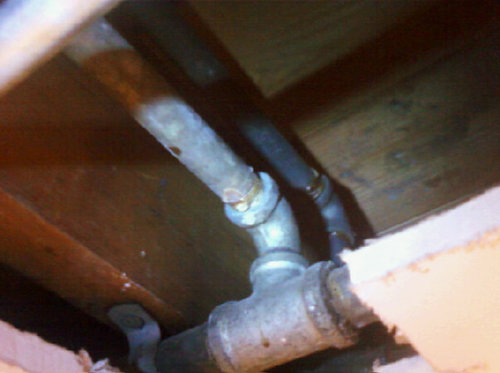Leaking galvanized thread
kingwah
11 years ago
Related Stories

REMODELING GUIDESBathroom Workbook: How Much Does a Bathroom Remodel Cost?
Learn what features to expect for $3,000 to $100,000-plus, to help you plan your bathroom remodel
Full Story
TRADITIONAL STYLEDecorating With Antiques: Silver’s Legacy
Learn how to tell sterling from plate, ways to display pieces and why silver is so darn special to begin with
Full Story
MOVINGHome-Buying Checklist: 20 Things to Consider Beyond the Inspection
Quality of life is just as important as construction quality. Learn what to look for at open houses to ensure comfort in your new home
Full Story
HOUSEKEEPINGLower Your Heating Bills With Some Simple Weather Stripping
Plug the holes in your house this winter to make sure cold air stays where it belongs: outside
Full Story
FARM YOUR YARDHow to Build a Raised Bed for Your Veggies and Plants
Whether you’re farming your parking strip or beautifying your backyard, a planting box you make yourself can come in mighty handy
Full Story
DIY PROJECTSHow to Replace Your Kitchen Faucet
Swap out an old faucet to give your kitchen a new look — it's a DIY project even a beginner can do
Full Story
WINDOWSSteel-Framed Windows Leap Forward Into Modern Designs
With a mild-mannered profile but super strength, steel-framed windows are champions of design freedom
Full Story
GREAT HOME PROJECTSHow to Add a Radiant Heat System
Enjoy comfy, consistent temperatures and maybe even energy savings with hydronic heating and cooling
Full Story
GARDENING AND LANDSCAPINGHow to Make a Pond
You can make an outdoor fish paradise of your own, for less than you might think. But you'll need this expert design wisdom
Full Story
GREEN BUILDINGHow to Harvest Rainwater for Your Garden
Conserve a vital resource and save money by collecting stormwater for irrigation in a barrel or tank
Full StoryMore Discussions









homebound
Confire
Related Professionals
Harmony Plumbers · Eagle Mountain Kitchen & Bathroom Remodelers · East Tulare County Kitchen & Bathroom Remodelers · Wood River Kitchen & Bathroom Remodelers · Artondale Kitchen & Bathroom Remodelers · 20781 Kitchen & Bathroom Remodelers · Emeryville Kitchen & Bathroom Remodelers · Fair Oaks Kitchen & Bathroom Remodelers · Londonderry Kitchen & Bathroom Remodelers · North Arlington Kitchen & Bathroom Remodelers · Olney Kitchen & Bathroom Remodelers · Sun Valley Kitchen & Bathroom Remodelers · Tempe Kitchen & Bathroom Remodelers · Prairie Village Kitchen & Bathroom Remodelers · Hewitt Kitchen & Bath Fixturesbus_driver
homebound
lazypup
kingwahOriginal Author
James Park
User